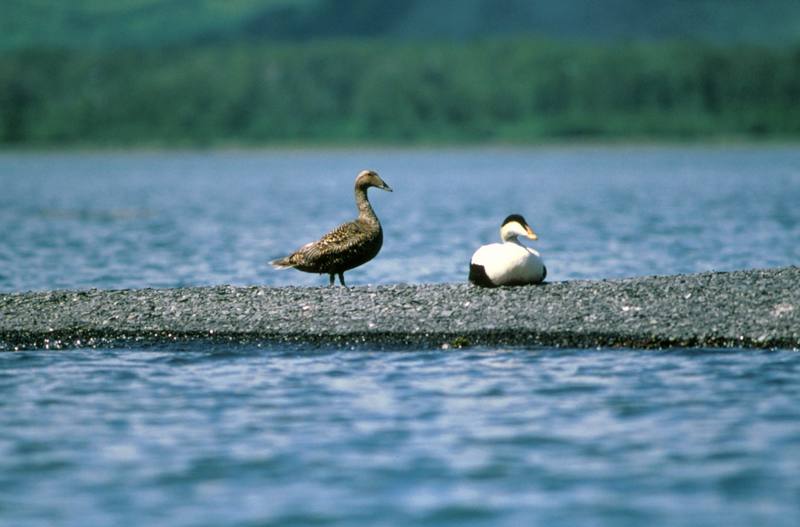|
| 질의: Birds of europe | 결과: 615번째/1705 | |
Common Eiders (Somateria mollissima) (솜털오리)
| 제목: | Common Eiders (Somateria mollissima) (솜털오리)
| | 올린이: | Phoby (phoby@hanafos.com)
| |

| 해상도: 3588x2364
파일크기: 660676 Bytes
촬영일: 2004:12:06 18:15:06
등록시간: 2004:12:06 18:10:32
|
From the U.S. Fish and Wildlife Service's online digital media library.
Check http://images.fws.gov/ for higher quality version.
Metadata
Title: Common Eiders
Alternative Title: Somateria mollissima
Creator: Menke, Dave
Source: WV-9125-General 2
Publisher: U.S. Fish and Wildlife Service
Contributor: NATIONAL CONSERVATION TRAINING CENTER-PUBLICATIONS AND TRAINING MATERIALS
Language: EN - ENGLISH
Rights: (public domain)
Audience: (general)
Subject: waterfowl, duck, ducks, sea ducks, bird, birds, Alaska, Kodiak Island
Date Issued: July 25 2002
The common eider (Somateria mollissima) is a large sea-duck that is distributed over the northern coasts of Europe, North America and eastern Siberia. Somateria mollissima breeds in Arctic and some northern temperate regions, but winters somewhat farther south in temperate zones, when it can form large flocks on coastal waters. |
^o^
동물그림창고 똑똑전화 누리집
^o^
|
|